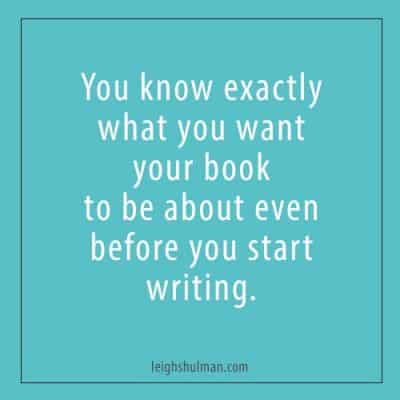What’s your story about? It seems pretty fundamental to writing. And yet… When I ask most people “What’s your story about?” they run through what happens, who people are and the twists in the story. They never tell me what’s the story about. That’s because I mean something different when I ask you what’s your story about. When I ask the question, I’m asking for the core meaning of your writing. Your “About” isn’t plot. It has nothing to do with your characters or the details of your writing. I want to know the core underlying truth of your book. This is what your audience will understand and feel when they finish reading your book.
An About is lofty and broad. It can apply to many books with many different plots, because an About represents an underlying truth for human beings. Click To Tweet An About impacts your reader deeply. You probably know exactly what you want your book to be about even before you start writing.Some real world examples:
A small group of people can be the reason good triumphs over evil. (Star Wars) You must believe in your own power before you can accomplish what you want in life. (Shrill: Notes from a Loud Woman) People are born and die, but your story continues long after your individual death. (Six Feet Under) When you know what your story is really  about, you choose scenes and events that support your About. When you don’t know? Then you have a group of characters acting and doing things without a clear purpose
about, you choose scenes and events that support your About. When you don’t know? Then you have a group of characters acting and doing things without a clear purpose
An example from a memoir-in-progress.
I’m working with a woman writing her cancer story. She began the book as she went through diagnosis and treatment. It follows how she felt, what happened in her life and the women she met in cancer support groups after she finished treatment. The story includes scenes with her husband, her family, her life both before and after the diagnosis. She’s a gorgeous writer, so I loved reading each section, but at the end of the draft, I couldn’t find one unifying idea to tie her scenes together. When I asked her what she wanted me to understand from her book. “Sisterhood,” she said.
Sisterhood transcends the boundaries of illness and health no matter who you are or where you live.
Knowing this About allowed us to edit out the parts that distracted from that core truth and strengthen the sections that showed the true beauty of women supporting each other in sickness and health. Being bullied as a kid and her favorite foods? Not so important, so she removed those scenes. Her relationship with her own sister, her mother and the women she met during treatment and recovery? Important, so they stay in the book.
How can you determine what your story’s about?
Sit down with a pen and paper and ask yourself the following question. What do you want your audience to understand and feel when they finish reading your book? Then write it down in one concise sentence. It might take a few tries before you get your About as you want it. If you find your one sentence has a lot of commas and semicolons, your about probably needs some clarification. If you find yourself going into details about the book itself, then you’re focusing on the events of the book and not the core meaning. Once you have the sentence clear, write it down on a piece of paper and keep it in front of you while you write. Simple yes, and immensely powerful.

